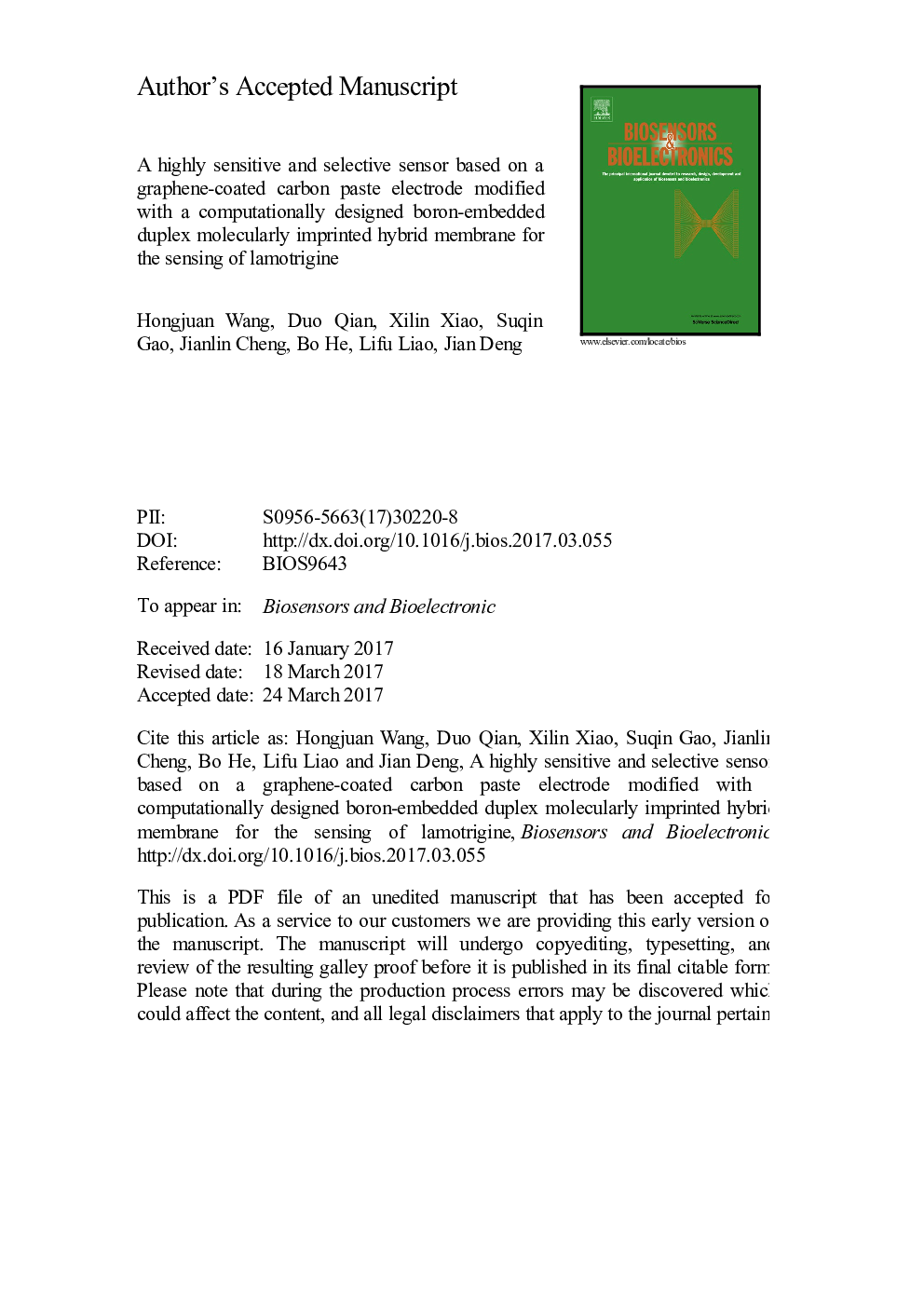| Article ID | Journal | Published Year | Pages | File Type |
|---|---|---|---|---|
| 5031099 | Biosensors and Bioelectronics | 2017 | 23 Pages |
Abstract
An innovative electrochemical sensor, based on a carbon paste electrode (CPE) modified with graphene (GR) and a boron-embedded duplex molecularly imprinted hybrid membrane (B-DMIHM), was fabricated for the highly sensitive and selective determination of lamotrigine (LMT). Density functional theory (DFT) was employed to study the interactions between the template and monomers to screen appropriate functional monomers for rational design of the B-DMIHM. The distinct synergic effect of GR and B-DMIHM was evidenced by the positive shift of the reduction peak potential of LMT at B-DMIHM/GR modified CPE (B-DMIHM/GR/CPE) by about 300 mV, and the 13-fold amplification of the peak current, compared to a bare carbon paste electrode (CPE). The electrochemical reduction mechanism of lamotrigine was investigated by different voltammetric techniques. It was illustrated that square wave voltammetry (SWV) was more sensitive than different pulse voltammetry (DPV) for the quantitative analysis of LMT. Thereafter, a highly sensitive electroanalytical method for LMT was established by SWV at B-DMIHM/GR/CPE with a good linear relationship from 5.0Ã10â8 to 5.0Ã10â5 and 5.0Ã10â5 to 3.0Ã10â4 mol Lâ1 with a lower detection limit (1.52Ã10â9 mol Lâ1) based on the lower linear range(S/N=3). The practical application of the sensor was demonstrated by determining the concentration of LMT in pharmaceutical and biological samples with good precision (RSD 1.04-4.41%) and acceptable recoveries (92.40-107.0%).
Related Topics
Physical Sciences and Engineering
Chemistry
Analytical Chemistry
Authors
Hongjuan Wang, Duo Qian, Xilin Xiao, Shuqin Gao, Jianlin Cheng, Bo He, Lifu Liao, Jian Deng,
